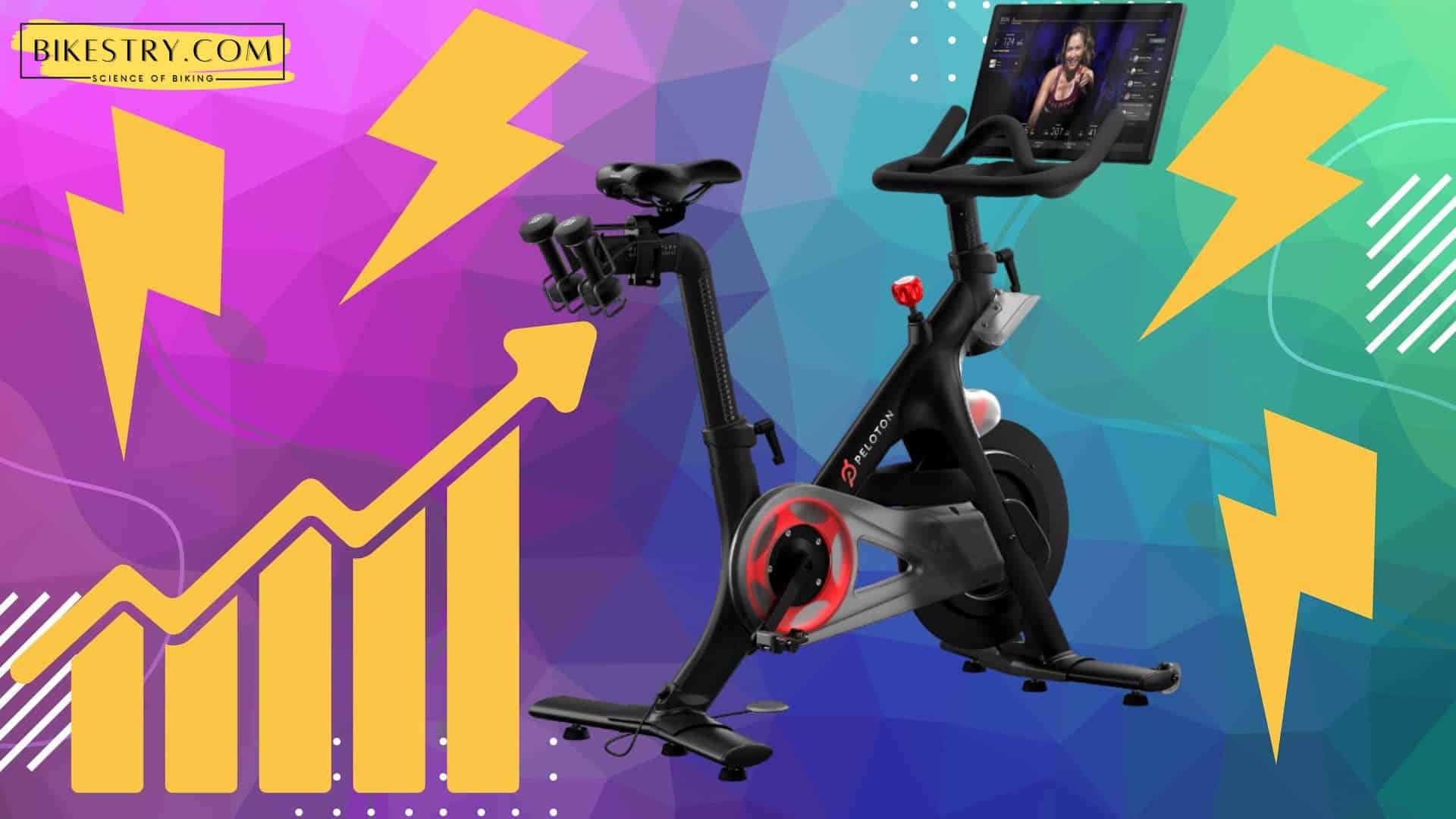What is a Good/Average Peloton Output? The Science of Getting a Good Peloton Output
Because it is an indicator of your workout progress, the Average power output (measured as watts) on a peloton bicycle is one of its most important metrics. You will have a lower output if you are a beginner. Peloton output results can also be affected by gender and age differences.
We will, however, determine your power zone and see what a good output is for you.
What Does it Mean by Peloton Output?
Peloton Output, which is a measure of how much energy or power you use in a class session, is an important metric. It is determined by the rider’s cadence (numbers of cycles per minute: CPM), resistance level (difficulty level) and is measured in Watts.
What is a Good Peloton Output?
In general, 150 ? 250 watts is the average output of a peloton. The peloton output is largely dependent on the individual spinner as well as several factors such FTP (functional threshold power), the type of class, your fitness level, gender, age, and body mass.
The Athletics and Fitness Association of America states that a beginner cyclist might average 75 to 100 watts during a one-hour workout. A professional cyclist can achieve 400 watts an hour, while a fit cyclist will average over 100 watts. ?
How Peloton Power Output (Watts) is Calculated?
A peloton bike’s dynamometer has a built-in feature that measures torque and records your actual power outputs. Your resistance and cadence are the key factors in your peloton output. The flywheel’s rotations per minute determine your cadence. Resistance, on the other hand, refers to the difficulty you set while cycling using the red resistance knob.
The average output times the number seconds in the ride is divided by 1k to calculate the total outputs. For example, if you ride for 30 minutes and average 100 Watts, your total output is 180 KJ
You will feel more confident when you are in a power zone. Your resistance will also increase your chances of reaching the Leaderboard.
Watts are used for measuring peloton output. You can increase your cadence or resistance to increase it, or just one, at most. Remember that resistance increases your output more then the cadence. So, no matter how difficult it is, you should work to improve it.
Peloton Output Table
It is important to use the Peloton output table to track your workout progress. Peloton community and me searched reddit threads to find an output table. I found it.
| Resistance | Cadence | Expected Output |
|---|---|---|
| 30 | 80 | 58-62 |
| 30 | 100 | 88-92 |
| 35 | 80 | 83-85 |
| 35 | 100 | 120-125 |
| 40 | 80 | 111-115 |
| 40 | 100 | 160-165 |
| 45 | 80 | 143-146 |
| 45 | 100 | 215-220 |
| 50 | 80 | 186-190 |
| 50 | 100 | 260-265 |
: Peloton Output Table
Peloton Output Chart by Age
Individual age plays a vital role on peloton output because of physical strength, for example, a 30 year old individual has better power output than a 70 year old individual. But another thought is, now a days news generation people pass their leisure time with video games, movies rather concentrate on physical activity, if you consider this, a 50 year old individual has better power output than a 30 year old individuals. Below the peloton output chart by age is represent a generous situation of individuals considering youngers have more physical strength. According to reports, almost 65% of Americans use peloton ages between 25 to 45 year old.
| Age Group | Share of Output (%) |
|---|---|
| 18-24 | 2 |
| 25-34 | 28 |
| 35-44 | 37 |
| 45-54 | 22 |
| 55-64 | 9 |
| 65+ | 2 |
: Table: Peloton Output Chart by Age
Peloton Output Chart by Weight
Actually, the peloton output is not based on individual weight. Power output is a measurement of the amount of energy involved during training and is determined by cadence and resistance. People with a higher body weight can produce higher peloton output in a short period of time, that means, a 70lbs individual has a maximum power output record but his/her average power output can be much lower because of his/her fitness.
| Weight (lbs) | 160w | 190w | 220w | 250w | 280w |
|---|---|---|---|---|---|
| 60 | 2.4 | 2.8 | 3.2 | 3.7 | 4 |
| 70 | 2.3 | 2.7 | 3.1 | 3.5 | 3.9 |
| 80 | 2.1 | 2.3 | 2.7 | 3.1 | 3.5 |
| 90 | 1.8 | 2.1 | 2.4 | 2.7 | 3.1 |
| 100 | 1.6 | 1.9 | 2.2 | 2.5 | 2.8 |
| 110 | 1.4 | 1.7 | 2 | 2.3 | 2.5 |
| 120 | 1.3 | 1.6 | 1.9 | 2.1 | 2.2 |
: Table: Peloton power-weight ratio in watts/lbs
How to Increase Output on Peloton?
To increase your peloton output, there are a few things you can do. These are the things you need to do.
- Keep your peloton bike in tip top shape
- Pick a quality pair of cycling shoes. Keep in mind that if your your feet are wider, look for cycling shoes that are specifically designed for wider feet.
- Concentrate on strength
- FTP tests can be extended and added to the vehicle.
- Spin to the music you love
- Keep track of your progress
What Factors are Affecting on Peloton Output?
Peloton output, as we said earlier, will depend on many factors such as personal experience, workout intensities, gender, and flexibility.
Let’s look at some of the factors that determine peloton output and the expected average output:
Workouts Intensity
Peloton outputs are affected by the intensity of your workouts. Higher intensity workouts produce more power outputs. FTP test ride, and HIIL ride are examples of high-intensity rides that produce more outputs than other low-impact rides.
Fitness Level
Fitness is a key factor in determining peloton outputs. Good physical and mental health are key factors in producing good peloton outputs.
Power Zones
There are seven levels of exertion in peloton. These levels are commonly referred to as power zones. You must take a 20-minute test to determine your
Functional Threshold Power. Based on your average results, this will determine which power zone you should join.
The cadence will be set, and you must achieve the cadence output within the 45-minute ride. This is the minimum cadence level that every person in your zone must achieve. If you do, your chances of being an outstanding rider will increase.
Power zones will enhance your performance, regardless of whether you are a beginner or a professional. What are the 7 power zones of peloton?
- Zone 1 (Active Recovery): requires FTP of 55% or less. Described as the easiest, and great for people recovering from injury and senior riders.
- Zone 2 (Endurance): calls for FTP level of between 55 and 75%. Quite easy, even the beginners can manage.
- Zone 3 (Tempo): 75 to 90% FTP required and for the moderate riders’ challenge.
- Zone 4 (Lactate threshold): This is a challenging power zone. You must be comfortable with peloton and improve your riding skills.
- Zone 5 (VO2max): 105 to 120% FTP necessary, and workout described as hard. At this point, you must be heading towards expert level in peloton workouts.
- Zone 6 (Anaerobic capacity): 120 to 150% FTP necessary to be in this power zone. The workouts are very hard at this point, and to be in this level, your Leaderboard position won’t even matter as much as the fact that you are already capable of achieving the target.
- Zone 7 (Neuromuscular power): 150%+ FTP needed, and at this point, you are now the master of peloton!
Age
Although age plays a significant role in peloton output, it can also vary. A 70-year old may perform better than a 40 year-old because they have been active all their lives.
Gender
Gender is a fact that can affect power outputs. In general, males are stronger than females in terms of physical strength.
Weight
Your peloton score is also affected by how many watts you produce and how much weight you have. Power is more pronounced in heavier people than in thinner ones. This is where 5.1 watts is compared to your weight in kilograms. 2 could be the result for a beginner in peloton.
Total Output vs Average Output on Peloton
As a whole, The total outputs represent the energy in KJ produced during the entire session.
average outputting
is the energy in watts produced per second or at the current time. The average outputs for longer rides are always higher than the total outputs. You may also have the same average outputs within 30 minutes.
What is a good peloton output for 20 minutes
In general, Depending on the type and intensity of class you take, the
good peloton average output for 20 minutes is between 200 to 250 watts. More intense classes produce more outputs, such as HIIls & HIIT and Power Zone Max ride, require more resistance and cadence, thus
you’ll get more outputs. A
good peloton total output for a 20-minute ride will be between 200 to 340 kJ.
What is a good peloton output for 30 minutes
In general, Depending on the type and intensity of class you take, the
good peloton average output for 30 minutes is between 180 to 250 watts. A
good peloton total output for a 30-minute ride will be between 300 to 480 kJ.
What is a good peloton output for 45 minutes
In general, Depending on the type and intensity of class you take, the
good peloton average output for 45 minutes is between 150 to 220 watts. On the other hand, A
good peloton total output for a 45-minute ride will be between 400 to 650 kJ.
From my experience, A
45 minutes climb rides, interval rides, power zone rides can produce higher total outputs.
What is a good peloton output for 60 minutes
In general, Depending on the type and intensity of class you take, the
good peloton average output for 60 minutes is between 150 to 250 watts. On the other hand, A
good peloton total output for a 60-minute ride will be between 450 to 700 kJ.
Peloton output not working? Here’s the Solution
You would do two things to fix it:
- Make sure there is a firm connection between your monitor cable, and your touchscreen
- turn off the bike and then restart it. Chat with , Peloton support if neither of these two works.
In a Nutshell
All the factors listed above will help you get the best peloton workout output. Only then will you be able to determine the best peloton output.
It is a good idea to get in a power zone. This will increase your workout output. This is because you strive to do the best for your level and you also learn to increase your resistance. What is a good peloton workout? All the factors will be constant, you’ll find that.

